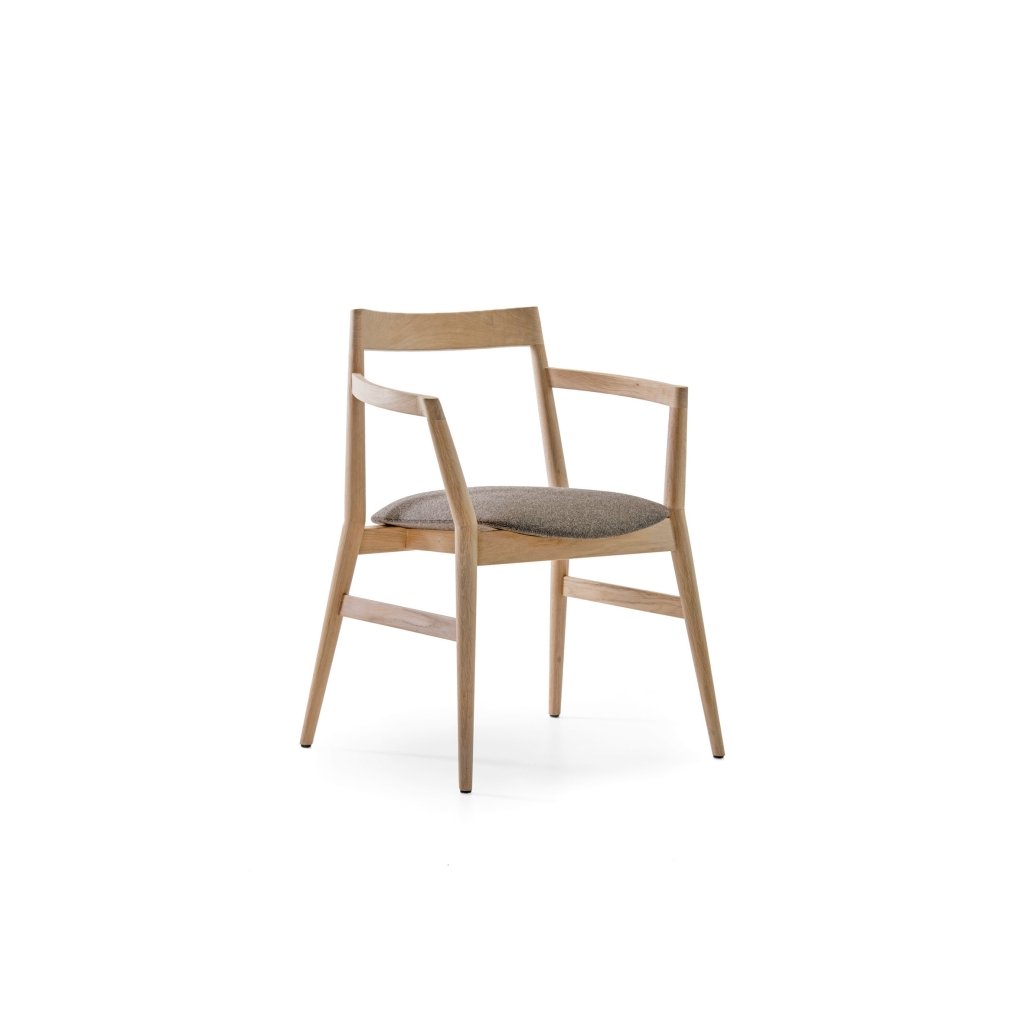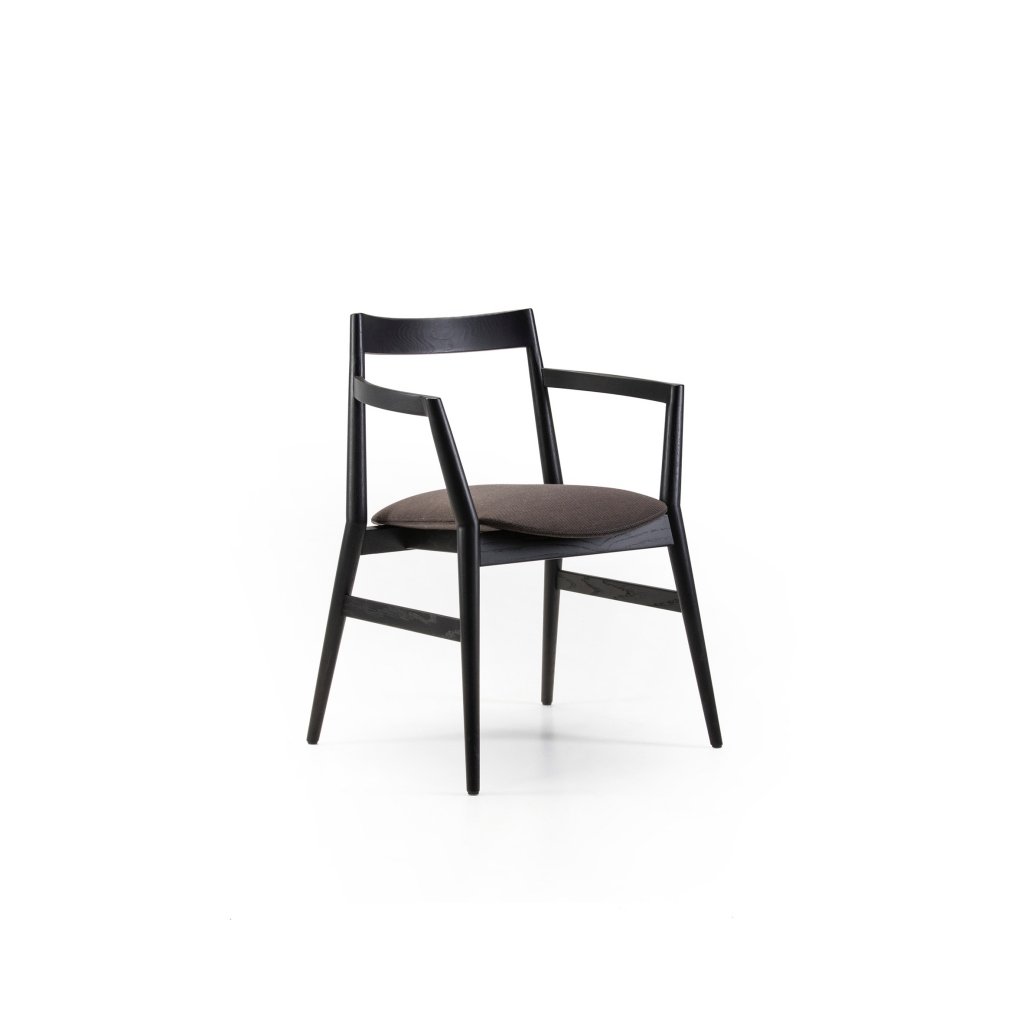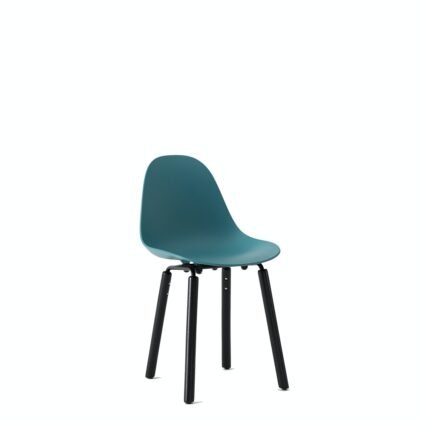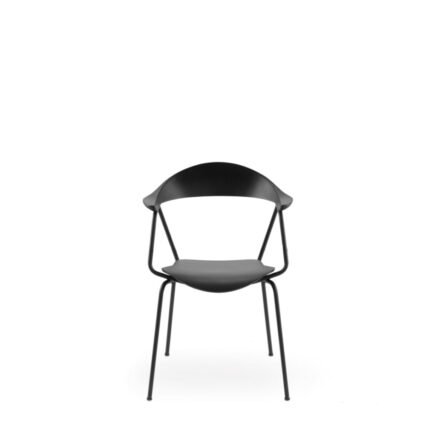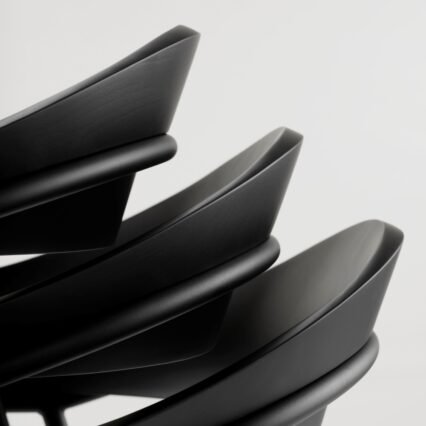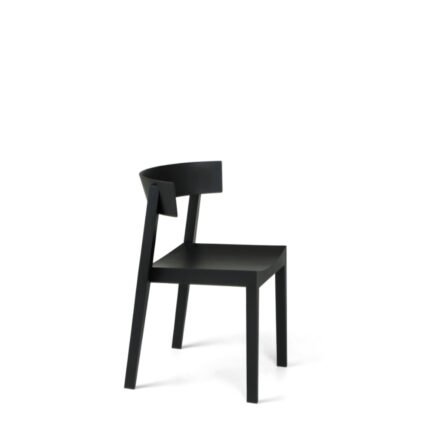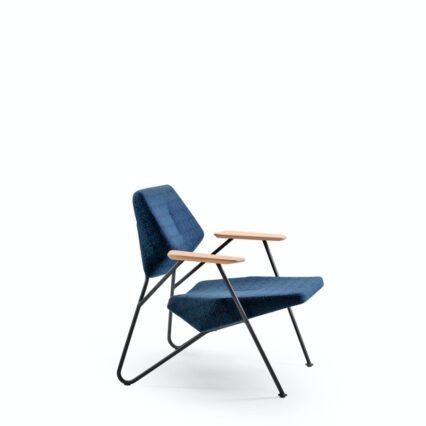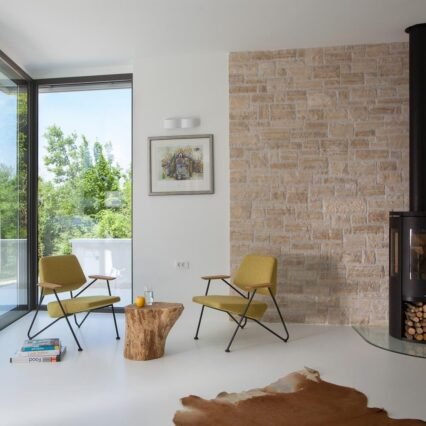PRODUCT INFORMATION
Dobra is based on the traditional typology of a wooden chair with an upholstered seat. The chair’s character is defined with a double, symmetrically placed leg cones. On the cones joints, the axis changes angle in order to meet the functional geometry parameters, thus bringing the dynamics in the conservative form of archetypal wooden chair with armrests.
We have reinterpreted the traditional typology of a wooden chair with armrests using a characteristic ‘break’ in the geometry of front legs. Rounded geometry of turned armrests and the backrest is mirrored in the lenticular cushions. Primarily functional intersection between the legs and transversal bars on the seat maintains geometrical exactness. Intersections between the backrest and armrests, perceptible by touch, were created according to the principles of organic transformation of volume. Those contrasts between ‘soft’ and ‘hard’ elements and intersections shape the Dobra’s characteristic formal language.
Features
Structure: solid wood + oil / lacquer / colour lacquer
Seat: moulded foam
Upholstery: fabric / leather
Dimensions
Width: 23.2 inches
Depth: 21.2 inches
Height: 31.1 inches
Seat Height: 18.8 inches
The dimensions provided below are in centimeters.
COM/COL Yardage
Kindly contact our sales office for details on COM/COL yardage information.
The Prostoria Dobra collection is crafted on a made-to-order basis, with lead times 12-14 weeks.
Please contact our sales office for COM/COL order details.
Applied to all metal parts. All colors listed below are from the RAL catalog.
Copmpact laminate (HPL) used on table tops. These table tops also suitable for outdoor use.
Lacquer finish used on table tops and wooden chair and sofa legs.
Fenix used on the table tops.
Used on table tops and cabinet shelves.
GALLERY
DOWNLOADS
Dobre Chair by Numen / For Use
Dobra is based on the traditional typology of a wooden chair with an upholstered seat. The chair’s character is defined with a double, symmetrically placed leg cones. On the cones joints, the axis changes angle in order to meet the functional geometry parameters, thus bringing the dynamics in the conservative form of archetypal wooden chair with armrests.
We have reinterpreted the traditional typology of a wooden chair with armrests using a characteristic ‘break’ in the geometry of front legs. Rounded geometry of turned armrests and the backrest is mirrored in the lenticular cushions. Primarily functional intersection between the legs and transversal bars on the seat maintains geometrical exactness. Intersections between the backrest and armrests, perceptible by touch, were created according to the principles of organic transformation of volume. Those contrasts between ‘soft’ and ‘hard’ elements and intersections shape the Dobra’s characteristic formal language.
Materials
- Structure solid wood + oil / lacquer / colour lacquer
- Seat moulded foam
- Upholstery fabric / leather
Dimensions
- Width 23.2 inches
- Depth 21.2 inches
- Height 31.1 inches
- Seat Height 18.8 inches
+ Dobra chair presentation
Dobre Collection is made to order. Lead time would be 9-10 weeks.

Numen / For Use
NUMEN/FORUSE IS A CROATIAN-AUSTRIAN DESIGN COLLECTIVE WORKING IN THE FIELDS OF SCENOGRAPHY, INDUSTRIAL AND SPATIAL DESIGN AND CONCEPTUAL ART. THE GROUP WAS FIRST FORMED IN 1998 AS A COLLABORATIVE EFFORT OF INDUSTRIAL DESIGNERS.
Under the banner ForUse they designed for Cappellini, ClassiCon, Desalto, Interlubke, Magis, mdf Italia, Moroso and Zanotta. Numen/ForUse designs interiors and outdoor spaces in cooperation with architecture studios 3lhd (Croatia) and Imarea (Austria). In 2008 the collective turns its focus towards configuring objects and concepts, an activity resulting in more hybrid and experimental works such as the Numen-Light series, Tape Installation and Net. From 2004 onwards, they became intensely involved with scenography. Numen/ForUse are the only Croatian contemporary product designers whose works are regularly represented in global anthologies of contemporary design.
Prostoria
We tend to perceive furniture as something abstract, created on designers’ desks, and then produced, branded, and placed on the market by companies with different statuses and reputations. In fact, relations inside the contemporary globalized furniture industry are becoming more and more fragmented with less and less opportunity for complete dedication to synergies and collaborations… Prostoria, as a young company whose catalog already comprises some new icons such as the Polygon armchair and the Revolve transformable sofa, stands as an example of a different and more traditional approach based on the evolution from the local factuality and logical clustering of all actors involved in the production process.
The rapid development of Prostoria, formerly known as Kvadra, a company which has come a long way, from “starting from zero” to positioning itself as the leader and promoter of new ideas in only a few years time, is a story about the reintroduction of continuity both in Croatia and Central Europe, a region with vital but insufficiently recognized design scene and remarkable tradition and knowledge of the furniture industry. Those elements served as latent potentials that provided grounds for a continuation and had to be activated.
Since the beginning, Prostoria has been developing an integrative approach, functioning as a collaboration platform that nourishes and stimulates the continuous exchange of knowledge and experience between all the actors participating in the production of furniture. A dynamic workshop ambiance has been created offering opportunities mainly to young designers to explore their ideas in excellent conditions and bring them to the highest level of design, functionality, and technological artisanship. Many products have been developed over long periods of time surpassing a number of iterations until reaching their final form, which would be impossible without adequate support combining the contemporary technology and meticulous craftsmanship and handwork of the highest quality. Predominantly local materials are used, especially solid wood, and most of the production takes place within the company itself or in collaboration with local cooperatives.
While the company’s catalog also offers furniture based on tested models, Prostoria shows strategic and even passionate dedication to research-based design, convinced that authenticity has its place on the market but presents a special challenge in the times when it seems almost impossible to create truly innovative and fresh concepts. For that reason, Prostoria’s social responsibility and specific position have to be observed as a contribution to the evolution of design and readiness to take the risk in order to reach new values for the benefit of users and the culture. Thus, Prostoria stands as a project inside of which designers grow together with the company on the grounds of mutual trust and shared goals.




